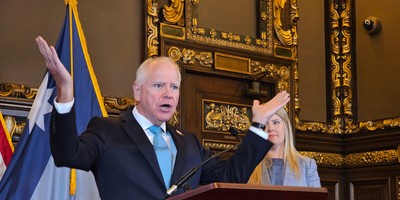On this week’s episode of “You Too Can Be a Patent Judge,” consider these two cases:
- Los Angeles wants to open high-occupancy traffic lanes that charged variable tolls, rewarding those with high occupancy with lower costs to reduce traffic and smog. On the East Coast, drivers have transponders in their cars that charge their accounts each time they drive past a tolling booth or high-speed tolling receiver. If Los Angeles uses a transponder with basically the same capabilities, does that constitute a separately patentable item?
- A drug company has an exclusive blockbuster drug for a specific disease that requires patients to take it daily. If it extends the dosage so it can be taken only three times a week, is that a new drug worthy of another 17 years of patent protection?
In both cases, the patent claims were found to be invalid – Los Angeles did not have to pay the firm that claimed to hold the patent on transponders, and the new dosage was not declared a new drug.
More importantly, this finding was reached without court cases that could cost those challenging the patents millions of dollars and, in effect, leave them defenseless against assertions of patent privilege by the holders.
Instead, the cases were decided through the Inter Partes Review process—a trial-like proceeding conducted at the U.S. Patient and Trademark Office’s Patent Trial and Appeal Board that reviews the patentability of one or more claims of previously issued patents. The process, created as part of the America Invents Act of 2011, has been credited with saving companies more than $2 billion in legal fees, not to mention fees for experts, research and other costs.
This process, which has been lauded as an efficient, less expensive and responsive way to address the occasionally erroneous product of severely overtaxed patent examiners – the average patent receives all of nine hours of review – is under threat.
Legislation recently reintroduced by Sen. Chris Coons, D-Del., would gut Inter Partes Review and reverse a Supreme Court ruling in eBay v. Mercexchange and again allow non-practicing entities – companies that own patents, don’t produce those products, but lay in wait for opportunities to make money off patent claims – to get immediate injunctions against the production of those products.
Recommended
In the case of Los Angeles, a company called Transport Technologies, a non-practicing entity, sued LA Metro, Southern California’s transit authority, asserting patents it held for counting and transmitting information from auto transponders amounted to a separate claim for which it should be paid.
LA Metro attempted to settle the matter through mediation, but that failed. So it filed a motion before the Patent Trial and Appeal Board that claimed the Transport Technologies patent was invalid because it was only an abstract idea rather than an introduction of new technology.
The Patent Trial and Appeal Board agreed LA Metro’s claim likely would succeed, so it referred the matter for an Inter Partes Review, and LA Metro prevailed. It cost the agency between $200,000 and $300,000, as opposed to well over $1 million if it had had to go through with the lawsuit.
The Transport Technologies patent talked about two distinct transmissions – a transmitter and a transponder that received signals. This indicates two devices, but LA Metro, like the EZ-Pass on the East Coast, uses only one device. This was not a hard case.
But judges, as one expert observed, “generally will not grant summary judgment on this type of argument, meaning that LA Metro would have to incur the expense of a trial to defend themselves using this argument.”
In fact, it is extremely hard to convince jurors in a trial to invalidate a patent because jurors tend to defer to the patent holder. This one action saved a taxpayer-supported public entity at least three-fourths of a million dollars. It provided a resolution that favored the transit agency over a company that holds a patent but does not create any economic activity by producing and selling it – the purpose of patent protection.
By examining the creations of America’s inventors and innovators, the U.S. Patent and Trademark Office has enabled the most dramatic economic expansion and general prosperity in the history of the world. It has done its part to perform government’s highest function – the protection of property.
Of the 640,000 patents granted in 2018, only 659 were challenged by the end of 2019. Non-producing entities have not gone away, but as a Stanford law professor told the New York Times, “Now they sue and ask for $50,000 rather than sue and ask for $1 million.”
Inter Partes Review is working. This is no time to change it.

























Join the conversation as a VIP Member